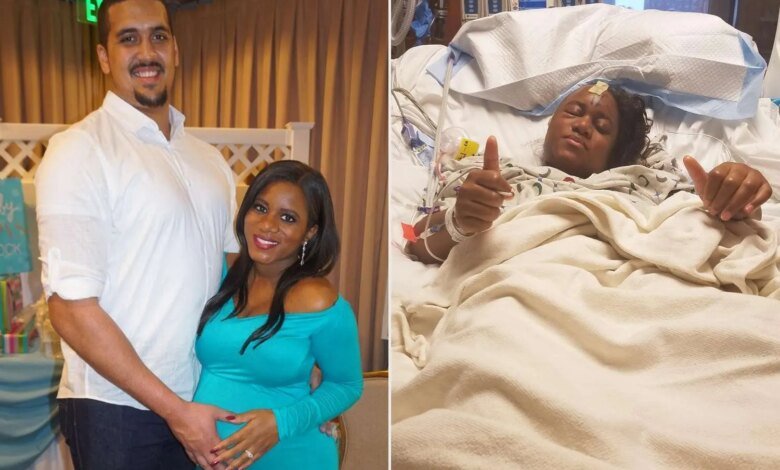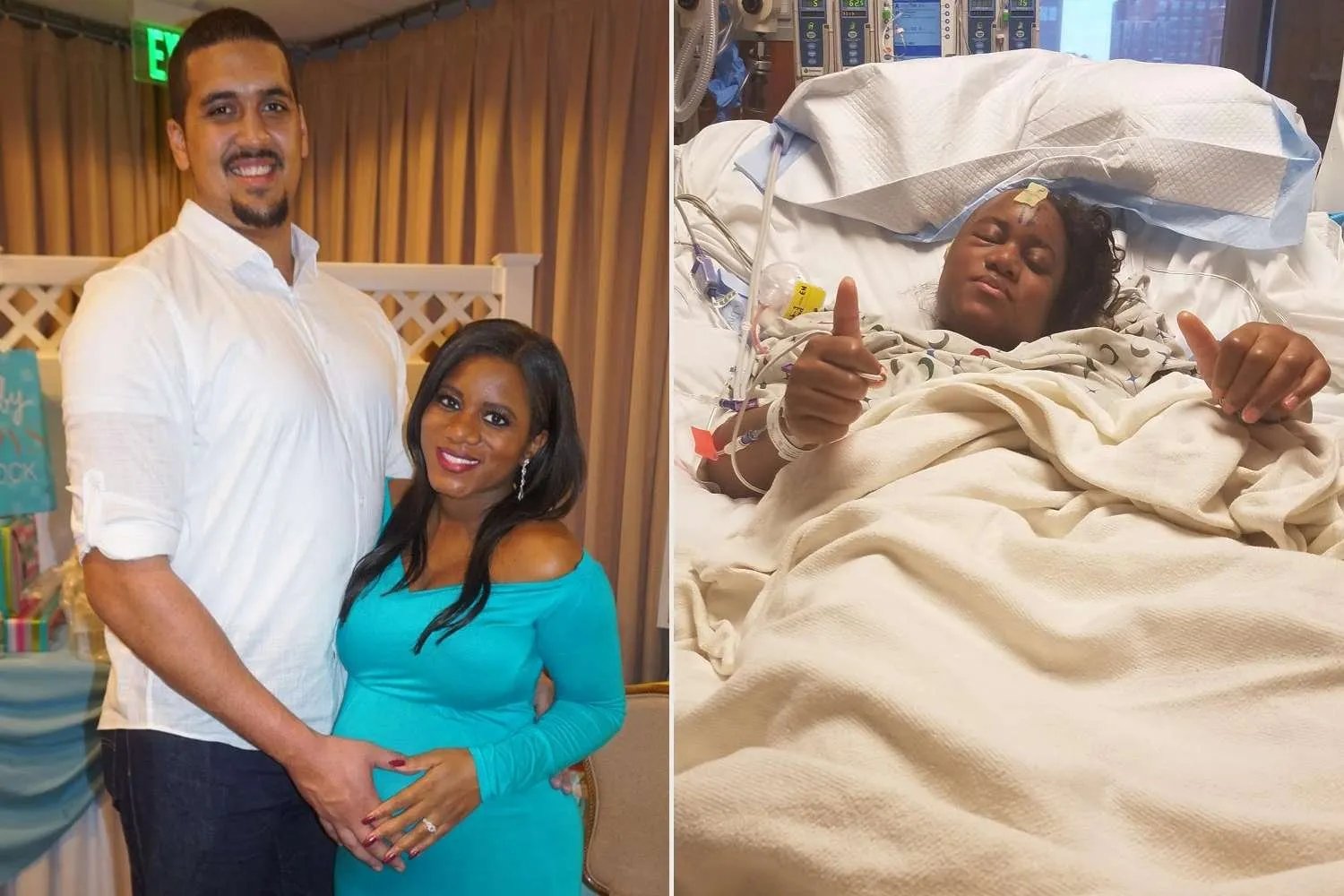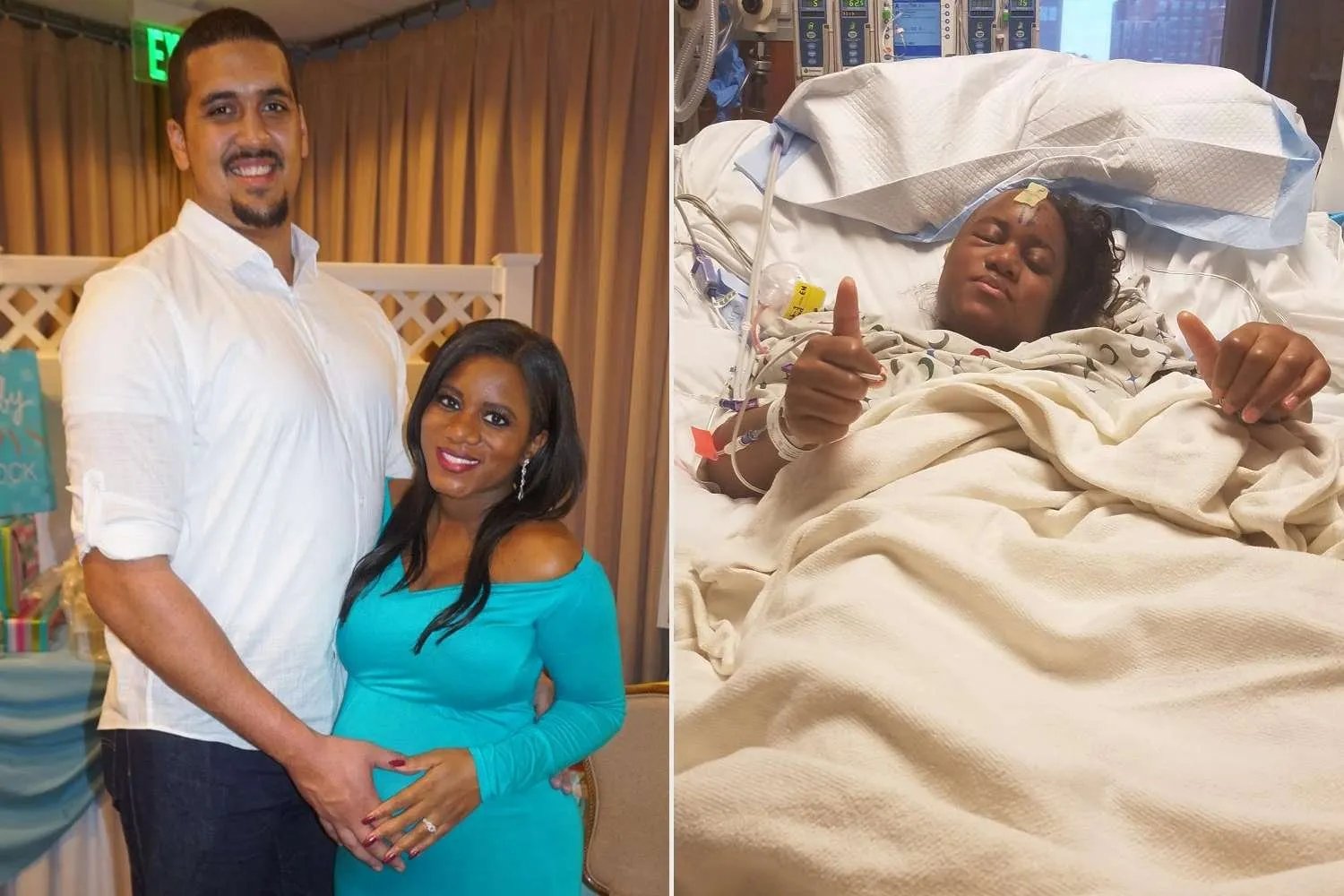How A Headache No One Took Seriously Nearly Cost A New Mom, 29, Her Life (Exclusive)

How A Headache No One Took Seriously Nearly Cost A New Mom, 29, Her Life (Exclusive)

uaetodaynews.com — How a Headache No One Took Seriously Nearly Cost a New Mom, 29, Her Life (Exclusive)
NEED TO KNOW
Shannel Pearman had built the life she always dreamed of: a thriving career as a TV reporter, a loving husband in Jared — a photographer she met while working at a station — and a home in Baltimore
The couple had been eagerly awaiting the arrival of their first child, a son due in May 2019, For most of her pregnancy, everything went exactly as she hoped. But as her due date neared, troubling symptoms crept in: sudden swelling, rapid weight gain and elevated blood pressure
The day had started off perfectly. Family filled the Pearman home in Baltimore, Md., eager to meet Shannel Pearmen and her husband Jared’s newborn son — the first grandchild on both sides. There was food, laughter and the kind of joy that comes from gathering around a baby.
But even as the house buzzed with happiness, Shannel was battling a nagging headache. She brushed it off as the exhaustion of new motherhood, assuming that by bedtime a little medicine would make it fade. Instead, the pain only grew worse. Her son’s cries kept her awake through the night — something that, looking back now, she says may have saved her life.
By morning, the headache had escalated. Without warning, Shannel was overcome by the urge to vomit. As she rushed to the bathroom, Jared followed close behind. When she looked up at him, half of his face had vanished from her vision.
In that instant, she knew something was terribly wrong. Shannel called her mother, a nurse, who urged her to get to the hospital immediately. The couple grabbed their one-week-old baby, threw a few things into a bag and sped through the night to the emergency room.
“It was supposed to be one of the happiest times of my life,” Shannel, then 29, tells PEOPLE exclusively. “We had just had our first child. We were over the moon. But overnight, everything changed.”
Shannel Pearman
Just weeks earlier, life had felt picture-perfect.
It was June 2019, and Shannel had built the life she always dreamed of: a thriving career as a TV reporter, a loving husband in Jared — a photographer she met while working at a station — and a home in Baltimore. The couple had been eagerly awaiting the arrival of their first child, a son due in May 2019, and for most of her pregnancy, everything went exactly as she hoped.
“It was my first child. I was glowing and happy, just wanting to rub my belly and enjoy it,” she says.
But as her due date neared, troubling symptoms crept in: sudden swelling, rapid weight gain and elevated blood pressure. Shannel voiced her concerns repeatedly, but says they were brushed aside. “Everyone kept telling me it was normal — that the swelling would go down.”
Instead, her condition worsened. At 41 weeks, she was induced and labored for hours before doctors determined an emergency C-section was necessary.
“Because of the surgery, I couldn’t hold my son right away,” she recalls. “That was so emotional. I had just given birth, my son was here, but I couldn’t hold him yet. I just couldn’t wait to finally have him in my arms. When the moment finally came in the early hours of the morning, even though I was exhausted, it was one of the best feelings.”
Shannel Pearman
Still, the troubling symptoms didn’t disappear. Shannel left the hospital with reassurances that everything was fine — that the swelling was normal and would resolve with time. She was told to come back in six weeks.
But just one week later, on June 1, 2019, a splitting headache and blurred vision sent her racing back to the hospital.
What followed was a blur. Doctors shuffled her between units — labor and delivery, then other departments — but never ordered a CT scan. Hours slipped by. It wasn’t until her mother arrived from Delaware and demanded answers that a scan was finally performed. That’s when they discovered the truth: Shannel was in the middle of a hemorrhagic strokecaused by a ruptured blood vessel in her brain.
“There was disbelief,” she says. “I was 29 years old. I was healthy. I had no health issues. I had just been in the hospital. Everything seemed fine. We didn’t think anything seriously wrong was happening.”
Shannel Pearman
Not long after, Shannel lost consciousness. The last thing she remembers is sitting in the ER holding her newborn as medical teams tried to comfort her. From there, she was rushed into emergency brain surgery, during which doctors removed half of her skull to relieve the swelling.
Her next clear memory is waking up in a different hospital. She remembers fumbling with her phone, trying to send texts until someone enlarged the font so she could read the words.
“The first few days felt like an out-of-body experience,” she says. “I had lost my left peripheral vision in both eyes. Waking up and not being able to see was emotional. But more than anything, I was just thankful to be alive.”
Shannel Pearman
Even before her stroke, Shannel, now 35, had planned to breastfeed her son. It had taken a few days to find a rhythm with him — and just as she did, everything changed. But her family refused to let that dream slip away. While she was in the ICU, Jared taught himself how to use a breast pump.
“No one there knew how — I was the youngest patient on the floor — so my husband had to figure it out himself,” she says. Relatives pitched in, creating a relay system: pumping, cleaning parts and driving milk from the hospital to their baby so she could continue.
“Something my family always noted is that no matter what I was going through, whenever I spoke, I was full of positivity,” she adds. “I was excited about what life could look like after I got through all of this.”
Her optimism carried her, but recovery was grueling. Shannel spent less than a week in the hospital before she was discharged, but until her second surgery on July 25, she had to wear a protective helmet anytime she wasn’t sleeping.
“I hated that thing,” she admits. “It was so bulky and uncomfortable, and I had to wear it constantly. I’m thankful for its purpose — it protected my head — but I couldn’t wait to be rid of it.”
When her helmet finally came off, it felt like freedom — yet the relief was paired with a sobering truth: nothing was going back to the way it was. She would not return to work, she could no longer drive and her vision would never fully come back.
With the help of occupational therapists and specialists, Shannel began to relearn how to navigate life. Still, at first, she didn’t fully understand what living with a brain injury would mean. Weeks — even months — passed before the reality truly set in. She had regained the ability to walk and talk, but invisible struggles remained.
“I struggle with processing, with crippling migraines, with reading and speaking sometimes,” Shannel explains. “There are moments when I can’t find the word I want or can’t get it out. And because the disabilities are invisible, it makes it even more complex.
“Essentially everything I do now is impacted by my brain injury,” she adds. “Something as simple as writing on paper takes extra effort. Everything has changed.”
Shannel Pearman
Looking back, Shannel says that rather than hide what she was going through, she made a different choice: to share it. Just days after leaving the hospital, she posted updates on Instagram — helmet on, baby in hand.
But what began as personal updates for friends and family soon grew into something larger, as strangers connected with her honesty. Today, she uses that platform to raise awareness about maternal health, Black maternal health and stroke among young people — issues she admits she barely knew about before her ordeal.
Her posts have since reached millions, including one video of her struggling to recall the color yellow. That clip alone has been viewed more than 6.6 million times and drawn over 16,000 comments.
“When that one picked up traction, I was so surprised because honestly, I didn’t even want to post it,” she admits. “I share so much of my journey, but that moment felt too raw, too vulnerable. I thought it was embarrassing. But my husband captured it, and I thought, maybe I should share — because it’s one thing to hear me talk about the struggle, it’s another to actually see it.”
At first, she posted the clip and logged off, too nervous to check. When she finally returned, the response floored her.
“I was taken aback that this video — the one I almost didn’t post — was getting millions of views,” she says with a laugh. “But then I started reading the comments, and it made me emotional.”
“On one hand, there was so much love and encouragement from strangers cheering me on,” she adds. “And on the other hand, there were people who could relate. That broke my heart, but it also made me grateful. Because for them, seeing that video meant they weren’t alone.”
Still, one of the hardest things she’s shared publicly has been her decision about whether to have another child. She and Jared had always dreamed of a bigger family, but after the stroke, the idea felt terrifying.
“Part of me felt like the stroke had robbed me of so much,” she says.
It took a year and a half of therapy, medical consultations and prayer before they were ready to even consider it. Ultimately, they made a plan — and when Shannel became pregnant again, joy came with new fears.
Her second pregnancy wasn’t easy. PTSD triggered anxiety and depression, but she carried on and eventually welcomed a daughter.
“Our family is complete,” she says with a laugh. “We have our baby boy, our baby girl. Confidently, we are never having another child again — I cannot go through this again. Our family is complete, and it is perfect.”
Shannel Pearman
These days, she says her focus is simple: “surviving the day.” Her symptoms remain unpredictable; stress, overstimulation or bright light can trigger severe migraines. She relies on Nurtec for relief, plus supplements and calming routines — coffee, hydration, slow mornings — to reduce risk.
Still, life with two little ones and a brain injury is anything but quiet.
“Where my brain needs peace and quiet, my kids give me everything but that,” she laughs. “I’m just trying to show up and be the best mom I can be.”
She’s even started talking to her son about her disability. “He’s six now, and that has been heartbreaking. The first conversation I had with him was explaining that I’m visually impaired, or ‘partially blind,’ as I say to him, and that’s why Mommy doesn’t drive.
“I had a suspicion he already knew, because sometimes he’d test me — like standing on my left side to see if I could see him,” she adds. “When I finally sat him down, he could repeat back what I said, but I don’t think he fully understands. For my sixth stroke anniversary, we watched some of my videos together, and he recognizes when I’m in a hospital gown — he’ll say, ‘That’s a stroke video, Mommy had a stroke.’ But I don’t think he quite grasps what that means.”
Reflecting on her journey, Shannel’s voice softens and tears fill her eyes. “I hate that it has happened, and I hate that I’m disabled,” she says.
For years after her stroke, the weight of her new reality hit hard. She wasn’t going back to work as a reporter. She couldn’t drive. Depression took hold, and dark days stretched on.
But last year marked a turning point. She realized she could sit in bed all day and cry, but life wouldn’t wait. Her children were growing, and she had been given a second chance — a new opportunity she couldn’t waste. “I can’t just rot away — I don’t deserve that, my kids don’t deserve that, my husband doesn’t deserve that,” she says.
Never miss a story — sign up for PEOPLE’s free daily newsletter to stay up-to-date on the best of what PEOPLE has to offer, from celebrity news to compelling human interest stories.
So she made a conscious choice to embrace the life she still had. “Yes, this sucks, but I’m going to live. I’ll take my kids to the Maryland State Fair, and maybe I’ll have a migraine afterward — but it’s okay. We’ll roll with the punches. Since making that shift, I’ve been able to truly be happy in this space. My old self would be proud of that.”
Her outlook has transformed. The struggles remain, but she’s focused on what truly matters: family, life, and creating memories. “Nothing else matters,” she says, a quiet certainty in her voice.
Disclaimer: This news article has been republished exactly as it appeared on its original source, without any modification.
We do not take any responsibility for its content, which remains solely the responsibility of the original publisher.
Disclaimer: This news article has been republished exactly as it appeared on its original source, without any modification.
We do not take any responsibility for its content, which remains solely the responsibility of the original publisher.
Author: uaetodaynews
Published on: 2025-10-14 09:49:00
Source: uaetodaynews.com





